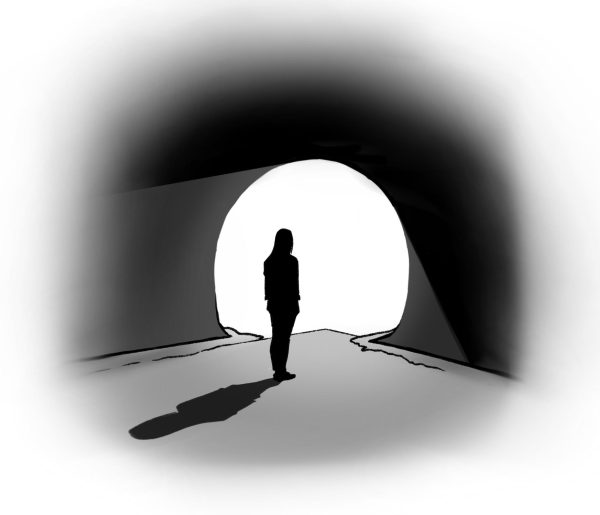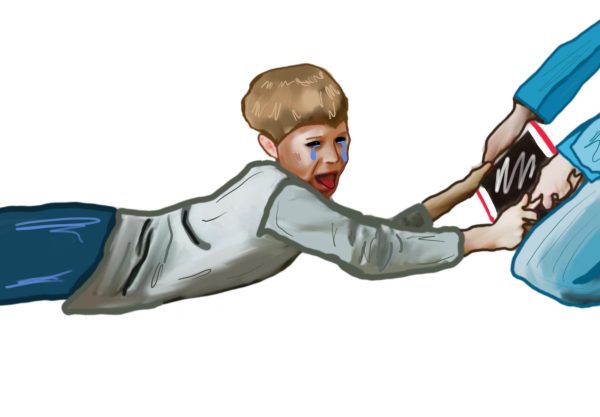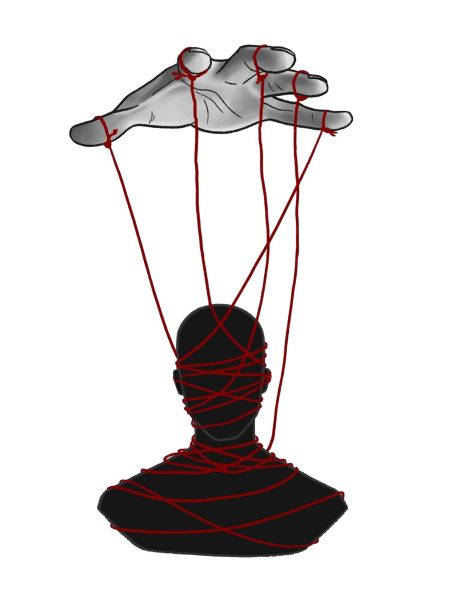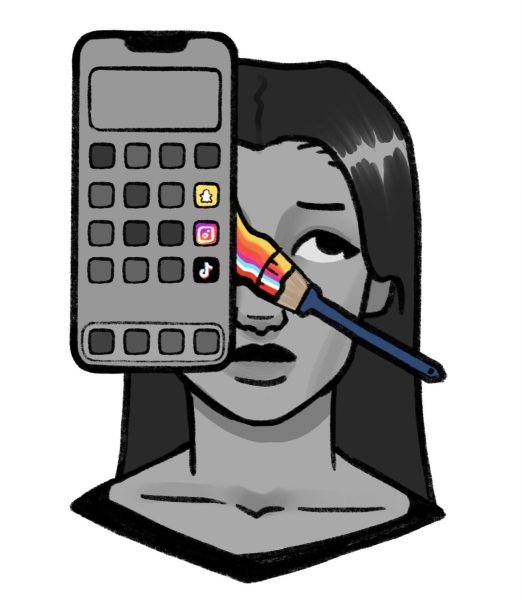Throughout the hallways and classrooms bullying is becoming less visible and more of an unnoticed norm
December 20, 2018
Bullying: what may seem like an old-school term is far from outdated. The presence of bullying exists in students’ lives whether it is visible or not. According to Stop Bullying, a platform dedicated to bullying prevention, its evolution has shifted from physical to verbal bullying, damaging students’ mental health and making it harder to combat.
Bullying in the classroom often goes unnoticed due to microaggressions, which can be hard for bystanders to identify as bullying. According to Psychology Today, “Microaggressions are the everyday verbal, nonverbal and environmental slights, or insults, whether intentional or unintentional, which communicate hostile, derogatory or negative messages to target persons based solely upon their marginalized group membership.” Often, microaggressions tend to be overlooked by the majority of students due to their implicit nature, but even the slightest remark can affect a student’s self esteem.
Junior Maria Saloom said she experiences microaggressions in the classroom frequently. As a leader of Students Organized Against Racism (SOAR), a national organization and club at Redwood, Saloom has a platform to spread awareness and help educate students and faculty about preventing racism. Although programs like SOAR exist, Saloom said being of Syrian descent makes it difficult for her to relate to some of her teachers, and makes her more vulnerable to racial microaggressions.
“In history class, we were talking about airport policies and how they do background checks. I spoke about how I was personally targeted because of the color of my skin, and how my brother was targeted because he was not speaking English in the airport,” Saloom said. “The teacher was like ‘Yeah a lot of brown people go through that,’ and she looked directly at [someone] who was a different race. These little things build up so much that you just start hating yourself and hating the community.”
Any form of bullying can disrupt a student’s day, whether it alters an individual’s mindset or forces them to change their usual route to class. According to a 2018 article published on Psycom, an online mental health resource, the effects of bullying range from symptoms of anxiety to school avoidance.
Junior Cassidy Rogers experienced such anxiety when she was bullied this year by three boys, who are in the same grade as her. She was harassed, made fun of, cyberbullied and eventually, her home was vandalized.
“The bullying made me feel like Redwood wasn’t a safe place. I have classes [with the bullies] and I have to see them every day. [My] anxiety rose a lot,” Rodgers said. “Coming to school every day just sucked more and more as it continued. School is supposed to be a safe place with a no-bullying policy, but it’s easier said than done.”
Eventually, Rogers’s parents told Redwood about the bullying. The school gave the bullies warnings and informed their parents about the misconduct.
Wellness Coordinator Jennifer Kenny-Baum supports students in the wellness center with issues regarding harassment, bullying and mental health. According to Kenny-Baum, to escape their bullies, students might feel the need to alter their habitual routes in the hallway or have a person with them to provide comfort.
“Everyone experiences [bullying] differently, sometimes you’ll be having to rethink where you’re going, what you’re doing, who you’re going to be with, how it’s going to work to feel protected,” Kenny-Baum said. “It could be anything as simple as ‘I’m going to change my routine of where I feel comfortable walking,’ or, ‘I’m going to feel like I need to have someone next to me.’”

Working in the wellness center, Jennifer Kenny-Baum (left) has seen the common effects of bullying.
In the year 2015-16, Redwood students were given a survey by the Wellness Center to be filled out anonymously, to evaluate the extent of bullying across all grades. The highest rates of bullying occurred in ninth grade. Results showed that 39 percent of ninth graders had been made fun of, insulted or called names. Thirty-nine percent had mean rumors or lies spread about them, and 40 percent of ninth graders reported having sexual jokes, comments or gestures directed towards them. These figures indicate that bullying is more prevalent at Redwood than it may seem, especially affecting first-year students who are in the process of adjusting to a new academic and social setting.
According to World of Children, an organization for vulnerable children, the impacts of bullying can severely impact victims’ mental health, drive them to substance abuse and elevate the risk of suicide. The Wellness Center and anonymous school tip line provide support for all students who are experiencing bullying. Counselors in the Wellness Center are required to keep students’ information confidential, unless someone is hurting them physically or sexually, in which case a counselor may have to break confidentiality.
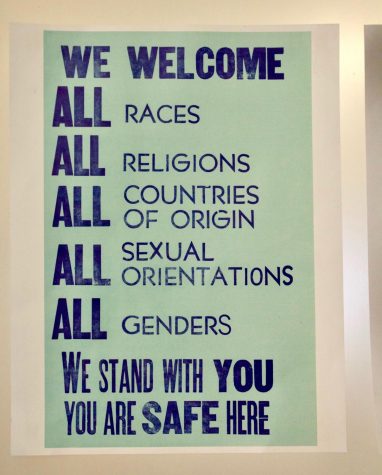
Supporting students is the primary role of the wellness center.
“Hopefully we would break confidentiality in a way that it’s not going to come back and create more problems for the person that’s experiencing [bullying]. That’s our goal,” Kenny-Baum said.
Reaching out for help and self-advocating can sometimes be the hardest part for victims of bullying. Some victims may feel scared or embarrassed, as sharing information can come with risks, according to Kenny-Baum.
“A fear-based reason why people don’t ask for help is that of retaliation. People fear that there’s going to be retaliation if someone admits that they’ve ‘snitched’ or told on someone that it’s going to end up getting worse,” Kenny-Baum said.
If a student wants to remain fully anonymous, he or she can report to the school’s anonymous tip line, or come into the Wellness Center and report an incident without being revealed. There are security cameras on campus, so if a student knows where bullying has occurred, administration can be asked to view the security cameras. According to Kenny-Baum, if bullying happens in a classroom, it’s almost guaranteed that another person heard it. That witness can come forward and report the situation, or help support the victim. There is also Title IX protection for students who are experiencing any type of sexual harassment or gender-based bullying.
The Wellness Center does not determine disciplinary consequences; their role is to support the student who is experiencing bullying.

During school hours, students are allowed to go to the wellness center for any need they have.
“Our primary focus is to make sure that the student feels safe and supported, and we come up with a safety plan for them. Then we help get them to an administrator, and the administrator is going to take any kind of disciplinary action,” Kenny-Baum said.
Usually, the first thing an administrator would want is a statement from a student or a statement from anyone who witnessed it in order to have an understanding of what happened. It is important for students to report bullying so that the culprits face consequences. The only way to combat bullying is to identify it, report it and create awareness by sharing experiences.
“You can’t really control what other people do, but you can teach them that what they’re doing is wrong. I think that spreading awareness and action will help,” Rogers said.








